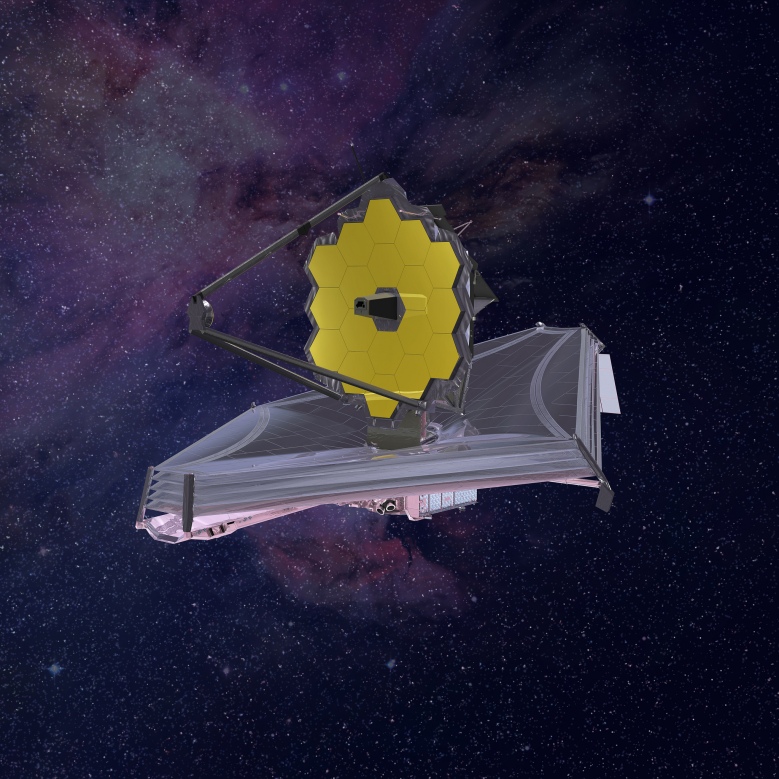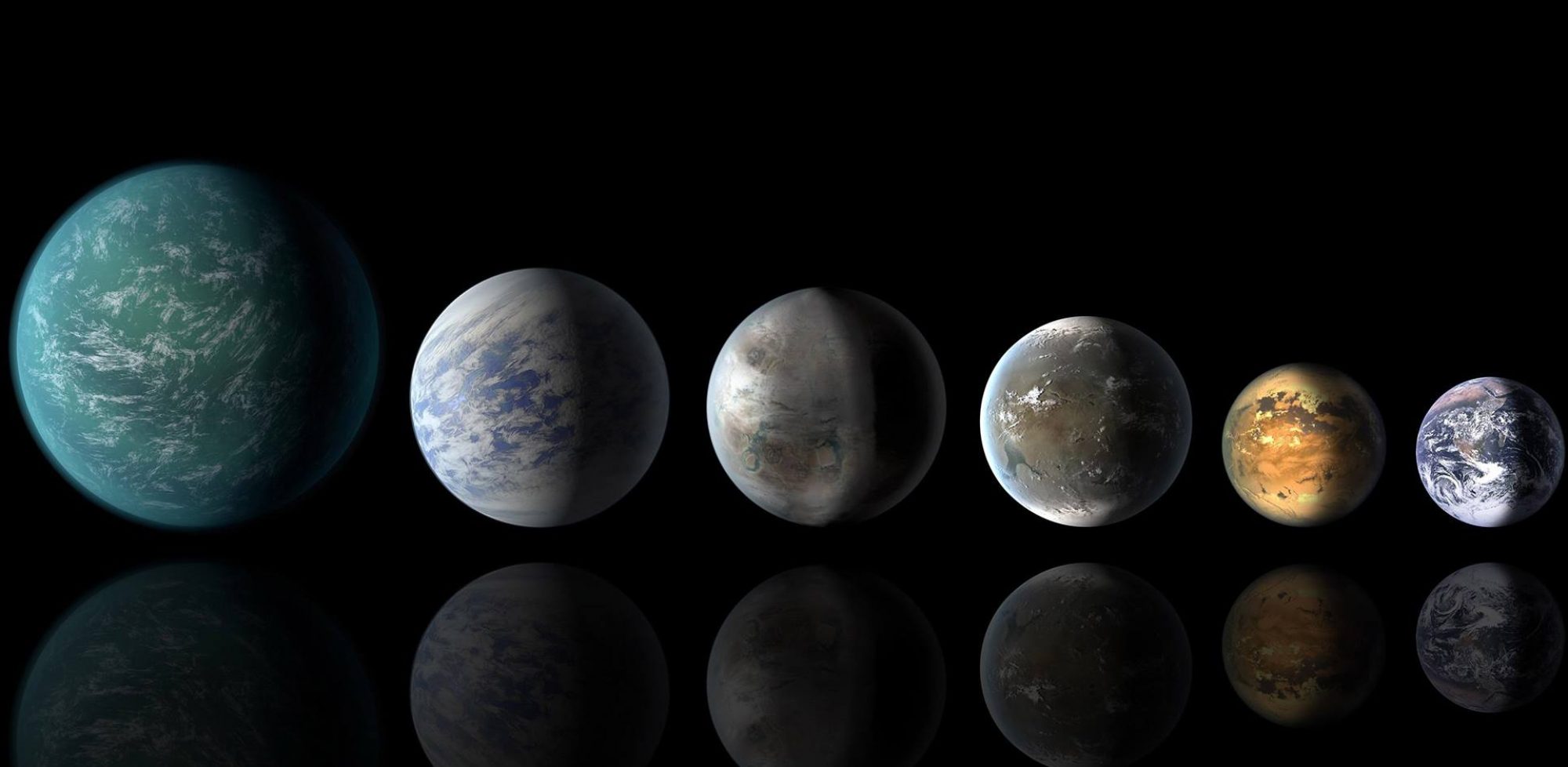
When the James Webb Space Telescope finally launches (late this month, if the schedule holds) it will forever change astronomy.
Assuming that its complex, month-long deployment in space works as planned, it will become the most powerful and far-seeing observatory in the sky. It will have unprecedented capabilities to probe the earliest days of the universe, shedding new light on the formation of the first stars and galaxies. And it will observe in new detail the most distant regions of our solar system.
Deep space astrophysics is what JWST was first designed for in the early 1990s, and that will be its transformative strength.
But much is also being made of what JWST can do for the study of exoplanets and some are even talking about how it just might be able to find biosignatures — signs of distant life.
While it is probably wise to never say never regarding an observatory with the power and capabilities of JWST, the reality is that it was not designed to look for the exoplanets most likely to be habitable. Actually, when it was first proposed, the observatory had no exoplanet-studying capabilities at all because no exoplanets had yet been found.
What was added on is substantial and exoplanet scientists say JWST can help advance the field substantially. But there are definite limits and finding biosignatures — life — is almost certainly a reach too far for JWST.

Astronomer Jacob Bean of the University of Chicago, who has played a leadership role in planning JWST exoplanet observations for the telescope’s early day, says that people need to know these limitations so the pioneering exoplanet science that will be possible with JWST is not seen as somehow disappointing.
As he explained, it is essential to understand that the kind of exoplanet observing that the JWST will mostly do is “transit spectroscopy.” This involves staring at a star when an exoplanet is expected to transit in front of it. When that happens, light from the star will pass through the atmosphere of the exoplanet (if there is one) and through spectroscopy scientists can determine what molecules are in that hoped-for atmosphere.
This kind of observing can potentially answer the pressing and unresolved issue of whether many exoplanets have atmospheres or not, and identify some of the molecules that are in them. But in terms of small rocky exoplanets, JWST by its design has limitations and can only study certain kinds of stars and planets — mostly exoplanets orbiting M dwarf, or red dwarf, stars.
These are by far the most common type of stars in the galaxy but they have features that many exoplanet scientists say can make them unlikely host stars for habitable planets.

“These are low mass, small size, low luminosity stars, with habitable zones that are close in so it is more common to find red dwarf rocky planets and to begin the process of characterizing their atmospheres,” said Bean.
“But these are very different stars than our sun, and whether any can support habitable planets is a very open question.”
Putting that issue aside for a moment, Bean said that the primary technical challenge when looking for biosignatures with JWST is that the signals we will get from rocky planets around red dwarfs will be very, very faint. “They may be enough to tell us that an atmosphere is present, but the likelihood of them telling us anything about biosignatures on these rocky exoplanets — I really don’t think that will happen.”
“That’s disappointing to a lot of people who think about exoplanets and work on exoplanets, and to the public that is really drawn to this question of habitablity and searching for life. Unfortunately, I believe we have to push that to the future.”
This is also the logic that led the National Academy of Sciences Decadal Study on astrophysics to recently recommend development of a grand observatory for the 2040s that will have an as-yet unattainable ability to directly image distant stars and planets. In other words, to photograph rocky planets orbiting much larger Sun-like stars.
These planets, the Decadal study reports, are the ones most likely to be habitable and perhaps inhabited by some form of life. And to find and observe them, the transit spectroscopy of JWST will not do the trick.
What will be possible with JWST is nonetheless extremely exciting to exoplanet scientists, and that is what they want to focus on and share.

By using a larger telescope to collect photons that can produce much higher resolution, Bean expects JWST to provide an answer to a question that looms large regarding planets that surround red dwarf stars: Do they even have atmospheres?
While these host stars are far less powerful than Sun-like stars, they have long periods in their early lives when they shoot out intense radiation and flares. Because exoplanets orbiting red dwarf stars are generally much closer to the host star than those orbiting larger stars, exoplanet scientists have debated whether those flares would sterilize the planets and make any future formation of atmospheres impossible. Adding to the habitability challenge of red dwarf exoplanets, many are tidally locked — meaning that only one side faces the star and the other faces into space.
Can such a planet give rise to an atmosphere? JWST will almost certainly give some answers.
JWST is an infrared telescope, meaning that it takes in radiation (mostly as heat) in that particular wavelength. A singularly infrared telescope does not have the versatility of the Hubble, for instance, which sees in a broad range of wavelengths.
But that infrared focus — which will allow the telescope to see extraordinarily deep into space and into the past — will also do a good job of seeing through interstellar dust and gas and the clouds known to surround some exoplanets. It will surpass optical telescopes as well when trying to see into the dusty protoplanetary disks where planets are formed.
The infrared is also very good at detecting carbon-based molecules and others that exoplanet scientists say are crucial to understanding what planets are made of and perhaps how they formed. Infrared is not good at all in detecting oxygen, a significant drawback. Some new experimental techniques of detecting that all important element in the infrared have been proposed.
These JWST capabilities (and many others) will allow the exoplanet community to learn about the characteristics and diversity of planets beyond Earth, how they evolve and migrate. And that knowledge, Bean said, will make it possible in the future to actually search for the exoplanets most likely to be habitable and just possibly inhabited.
He and his group have JWST time to study some ultra hot Jupiters that have gaseous iron in their atmospheres, as well as rocky planets around very nearby stars that could resemble Venus. Bean has been studying a super-Earth (larger than Earth but smaller than our solar system gas giants) called GJ1214b for a decade, and he will examine it further with JWST to try to determine if it is the “waterworld” that some scientists predict.


Because of its location in space one million miles away from Earth and its advanced instruments, JWST has a substantially greater sensitivity in the infrared than any previous telescope.
Among the solar systems that will be studied in greatly enhanced detail is TRAPPIST-1, which has seven Earth-sized planets orbiting its red dwarf host star. It is at the top of most lists of the most intriguing solar systems found so far.
There will be numerous Trappist-1 observations by JWST, but one is especially appropriate: MIT astrophysicist Sara Seager — one of the theoretical originators of transit spectroscopy around the turn of the century — is on a team that will be observing Trappist-1e, with Nicole Lewis of Cornell University as PI. That planet is often described as the planet in that system that is most Earth-like in its size, mass and orbital location relative to its sun.

When Seager first proposed the idea of transit spectroscopy as a young astrophysicist, there was a lot of doubt that it would be possible. But in 2002, a colleague at Harvard University, David Charbonneau, did indeed identify the first gas in an exoplanet atmosphere using transit spectroscopy. It was molecular sodium, which Seager had suggested would be a good target.
Seager is more sanguine about the likelihood that many red dwarf exoplanets will have atmospheres and she sees a primary JWST goal as determining if some have water vapor in those atmospheres. That atmospheric water vapor would strongly suggest that the planet has water on its surface.
Seager will also be studying a “sub-Neptune” planet — somewhere between Earth and Neptune in size but surrounded by a thick gas envelope. These sub-Neptunes are quite common, she said, and are not well understood at all.
Learning more about the characteristics and perhaps origins of planets such as sub-Neptunes is part of a crucial goal of exoplanet science — to make sense of the unexpected and wild menagerie of planets discovered so far, and no doubt to be discovered in the future. Many have sizes and locations that seemed impossible when first discovered, but now the task is to understand how and why solar systems can be so different from our own.
Looking back to the early days of exoplanet discovery and the evolution of transit spectroscopy to read their atmospheres, Seager said the launching of an observatory with the capabilities of the JWST was unimaginable back then. But more unthinkable, she said, is that endlessly surprising mix of the exoplanets being found.
“We didn’t imagine any of this. We didn’t know that exoplanets would be so richly diverse and didn’t imagine that exoplanets would come in all masses, sizes and orbits,” she said. “Right now we have more questions than answers about exoplanets and we think the atmosphere might well be a window to understanding them better.”
“We’re excited because with James Webb we’ll begin to know much more about what all that diversity really means.”

3 Replies to “What The James Webb Space Telescope Can Do For Exoplanet Science and What It Cannot Do”
Comments are closed.